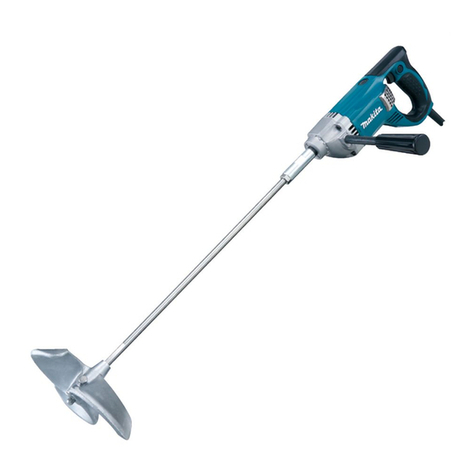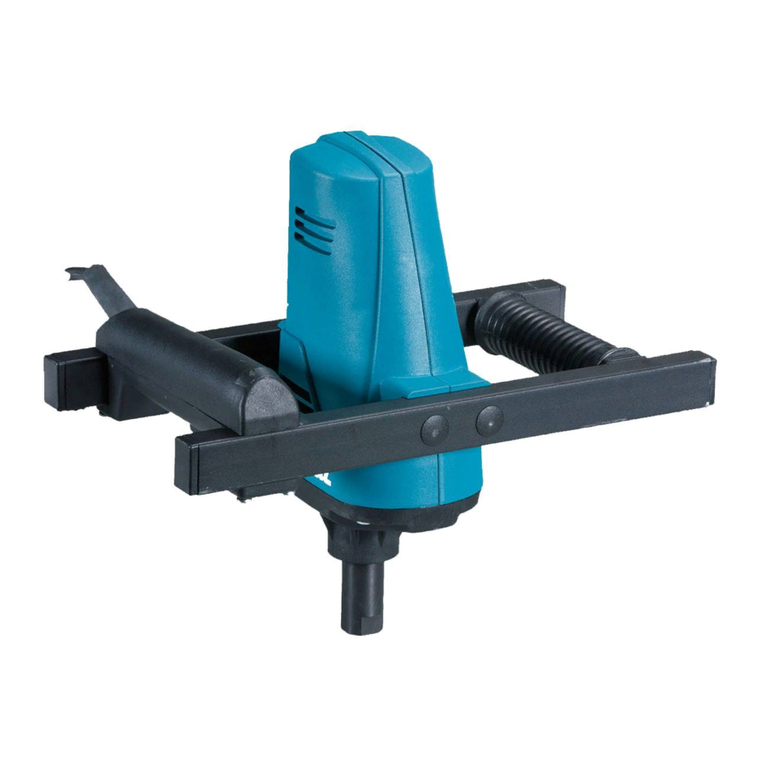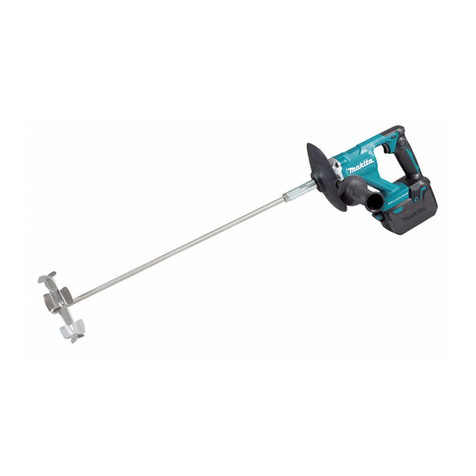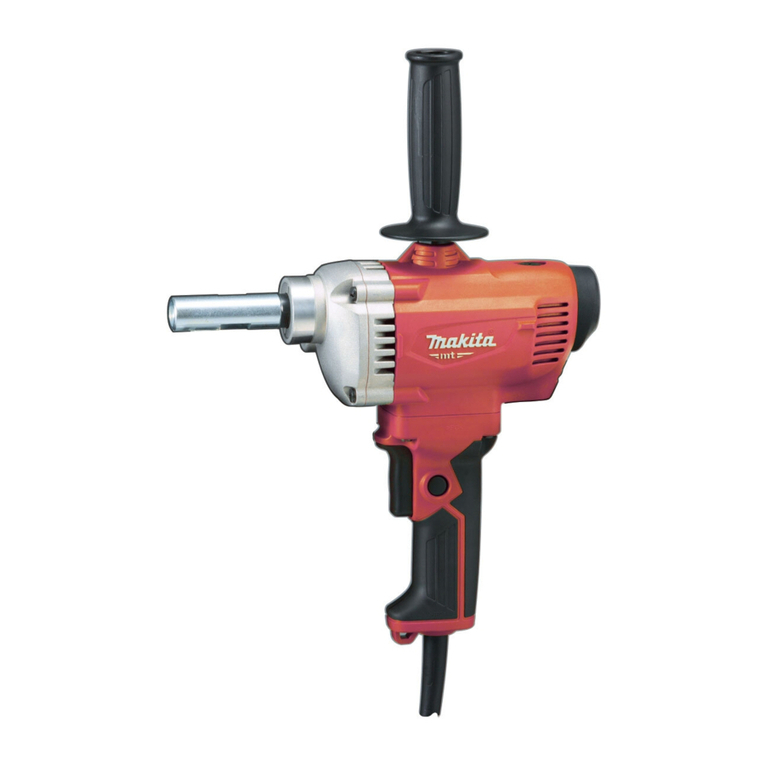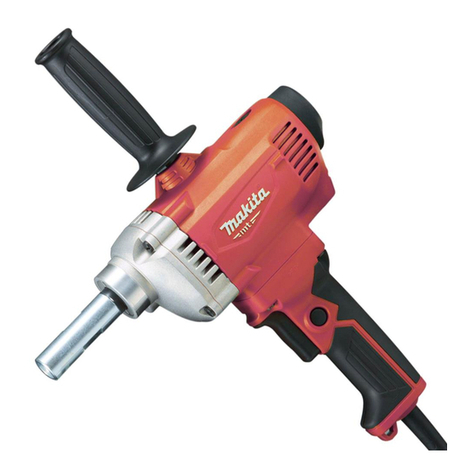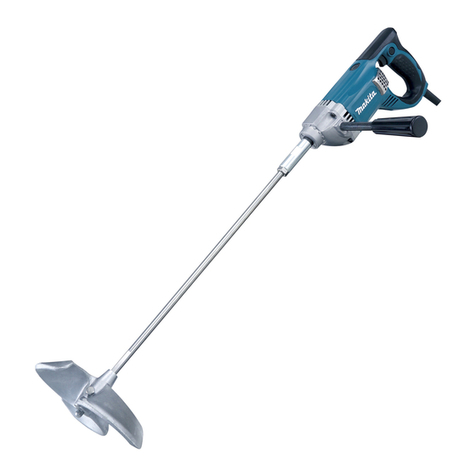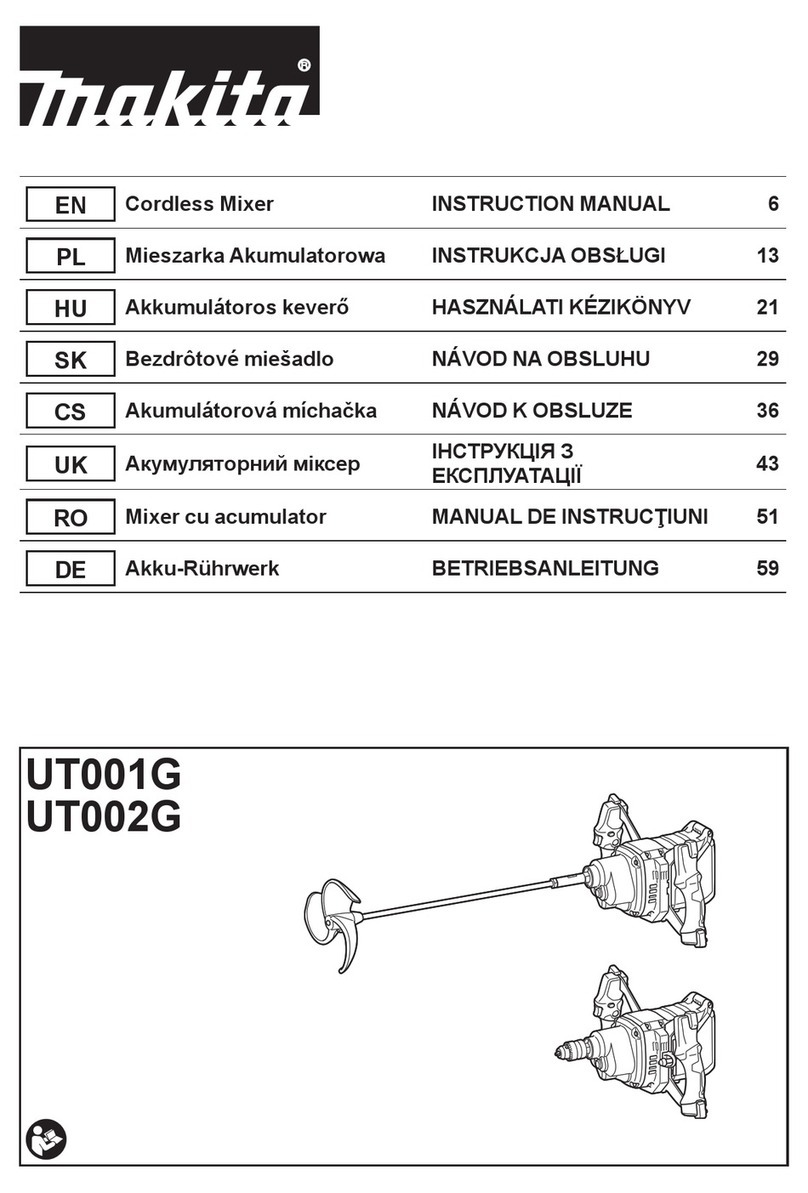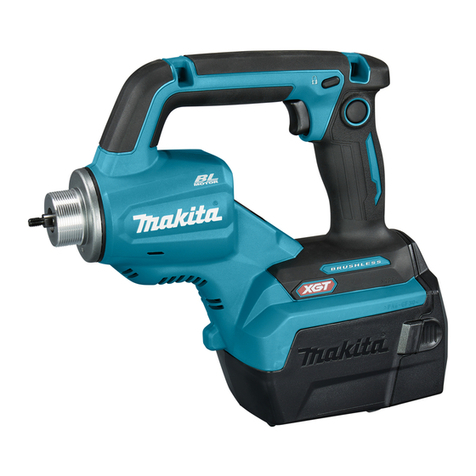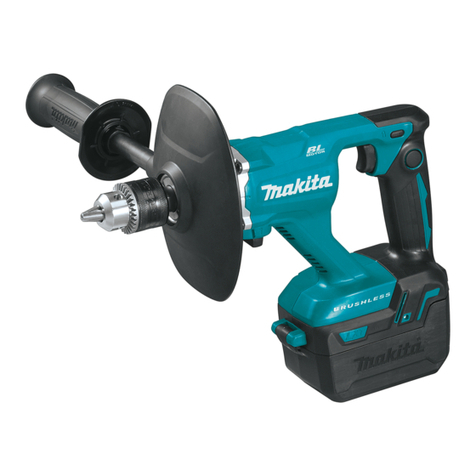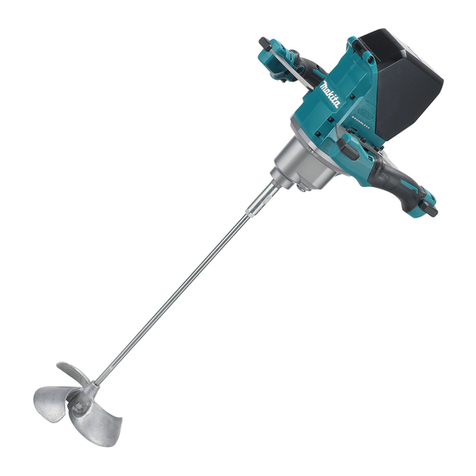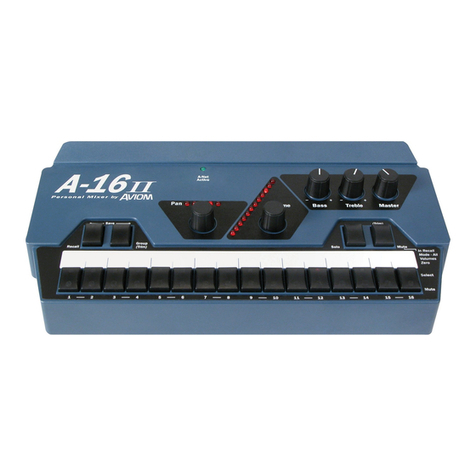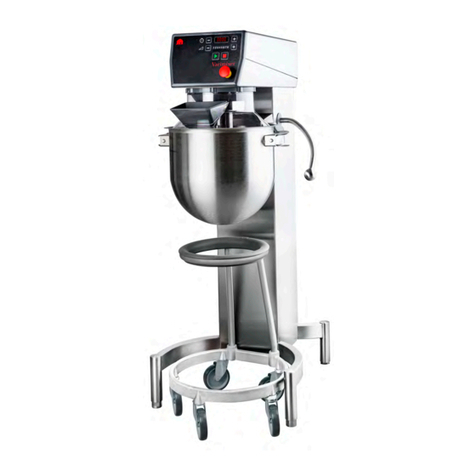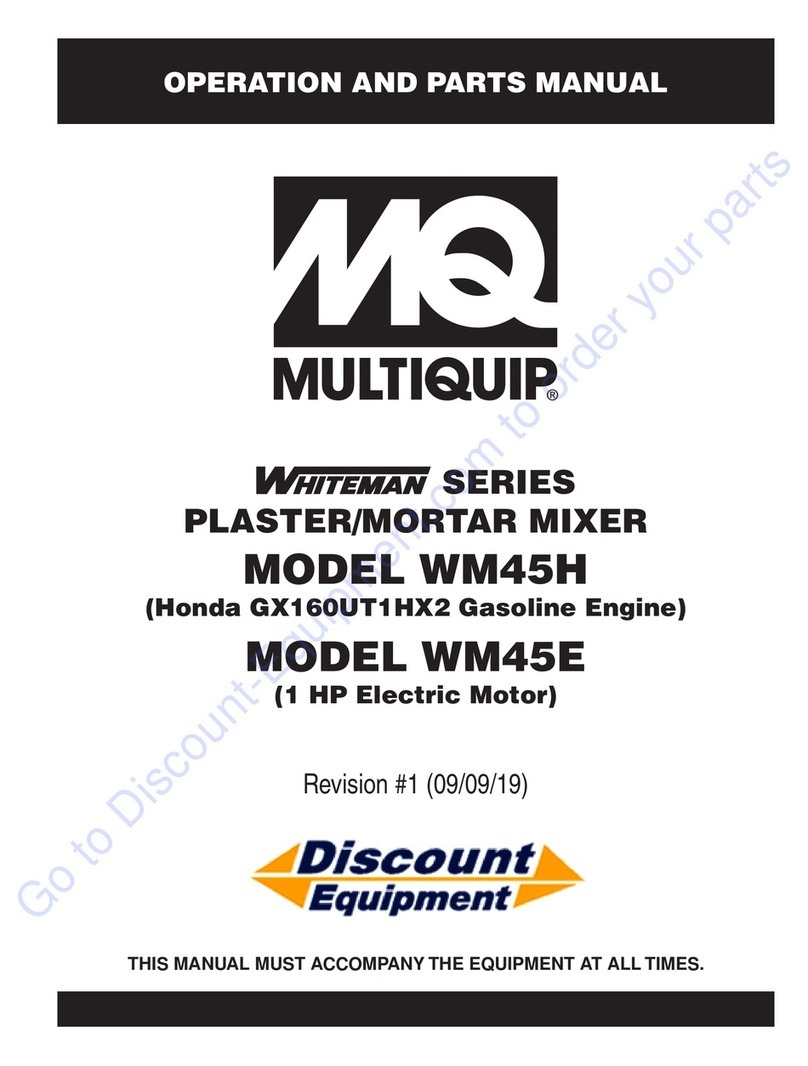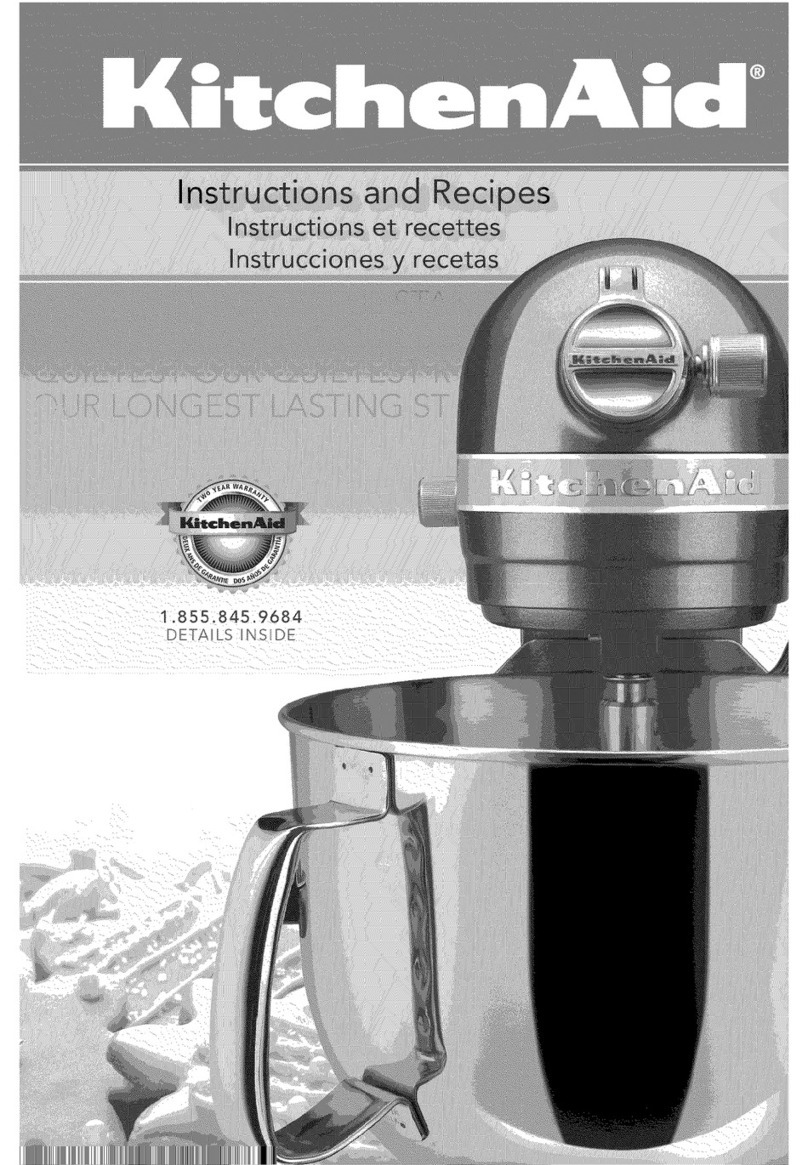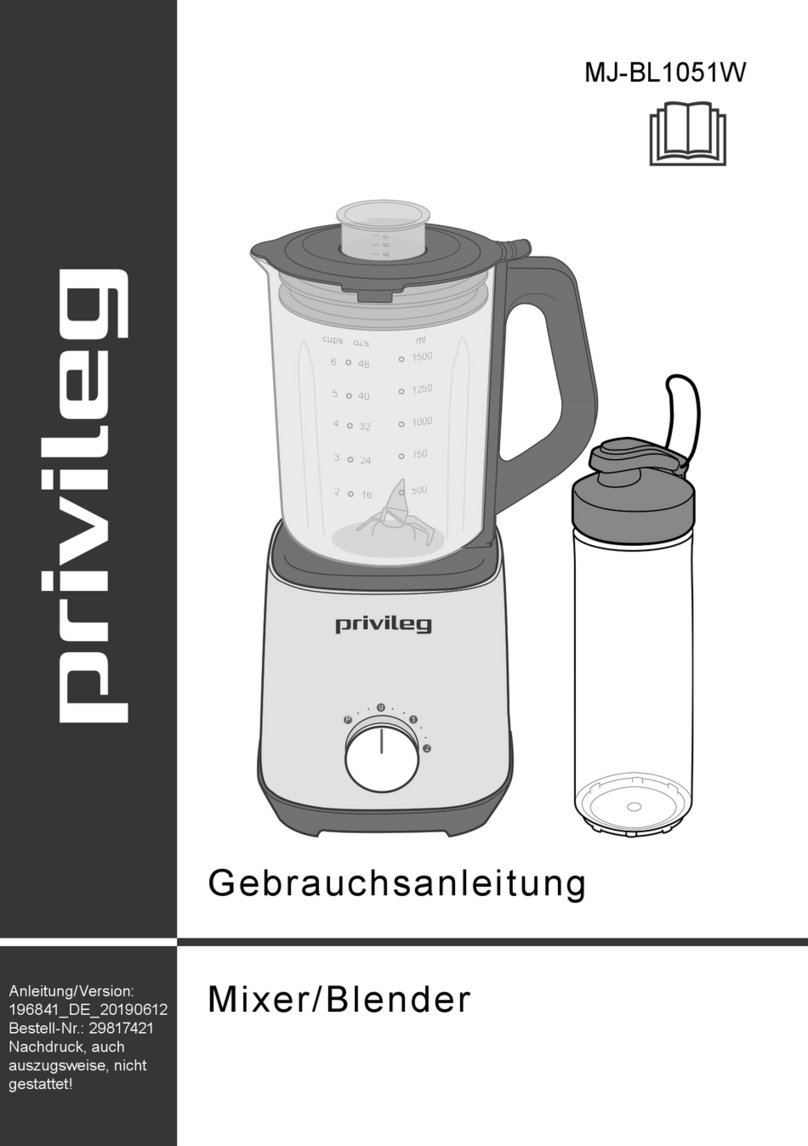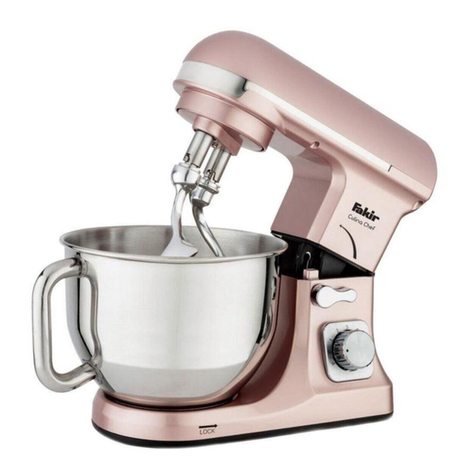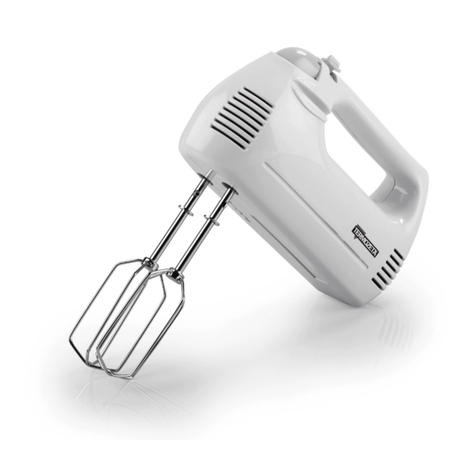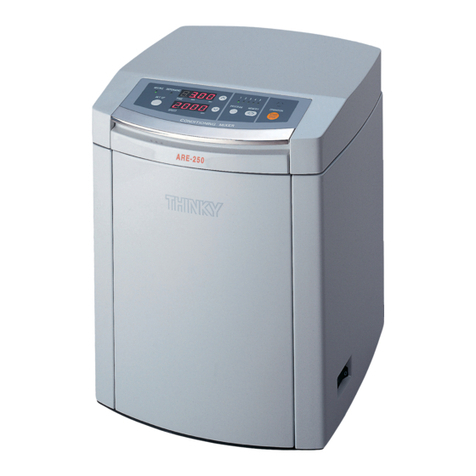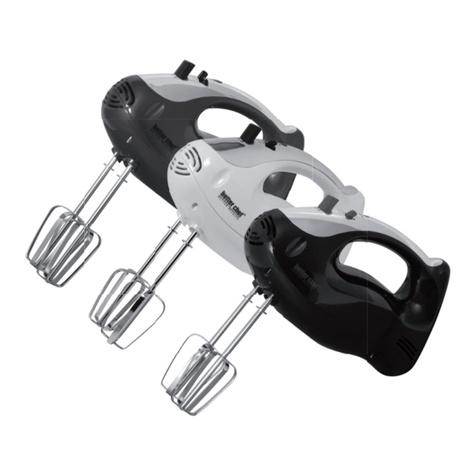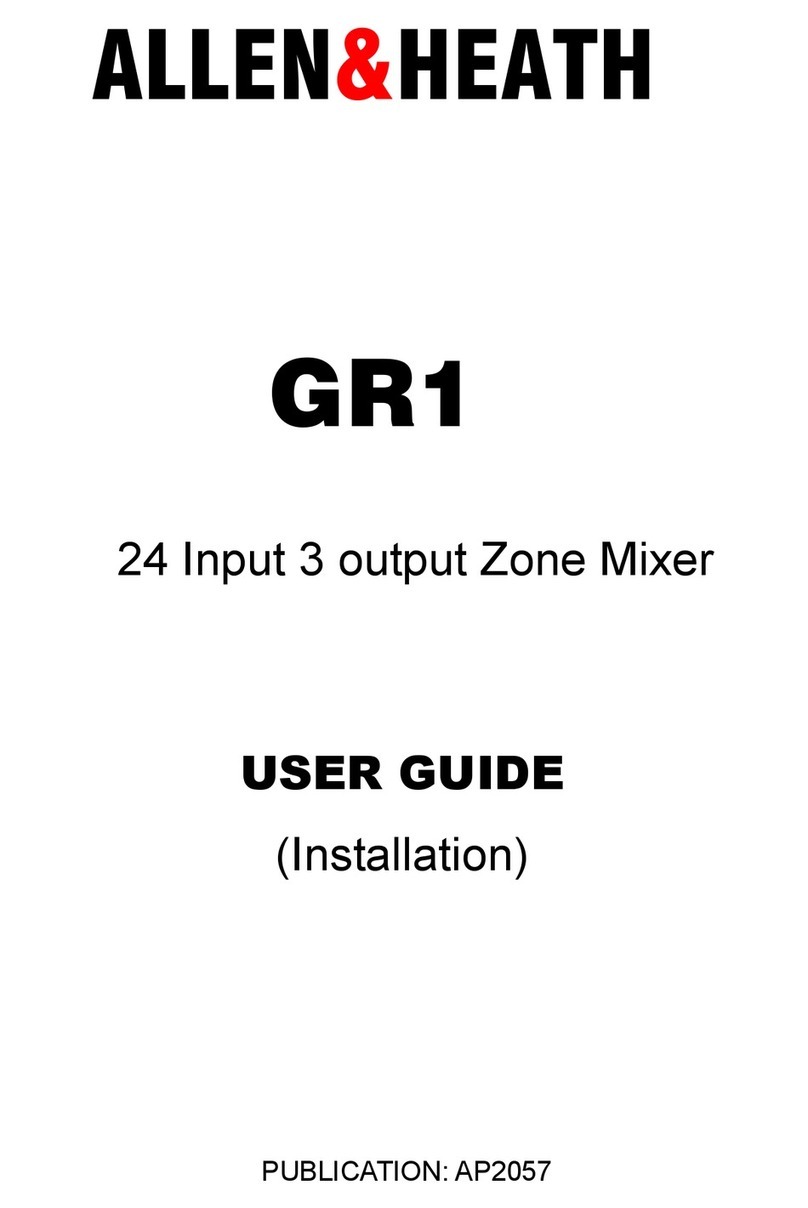
6ENGLISH
Vibration
The vibration total value (tri-axial vector sum) deter-
mined according to EN60745-2-1:
Model DUT130
Work mode: operation without load
Vibration emission (ah) : 2.5 m/s2or less
Uncertainty(K):1.5m/s2
Model DUT131
Work mode: operation without load
Vibration emission (ah) : 2.5 m/s2or less
Uncertainty(K):1.5m/s2
NOTE: The declared vibration total value(s) has been
measured in accordance with a standard test method
andmaybeusedforcomparingonetoolwithanother.
NOTE:Thedeclaredvibrationtotalvalue(s)mayalso
beusedinapreliminaryassessmentofexposure.
WARNING:
The vibration emission during actual
use of the power tool can differ from the declared val-
ue(s) depending on the ways in which the tool is used
especially what kind of workpiece is processed.
WARNING:
Be sure to identify safety measures
to protect the operator that are based on an estima-
tion of exposure in the actual conditions of use (tak-
ing account of all parts of the operating cycle such
as the times when the tool is switched off and when
it is running idle in addition to the trigger time).
EC Declaration of Conformity
For European countries only
TheECdeclarationofconformityisincludedasAnnexA
to this instruction manual.
SAFETY WARNINGS
General power tool safety warnings
WARNING:
Read all safety warnings, instruc-
tions, illustrations and specications provided with this
power tool. Failure to follow all instructions listed below
mayresultinelectricshock,reand/orseriousinjury.
Save all warnings and instruc-
tions for future reference.
Theterm"powertool"inthewarningsreferstoyour
mains-operated(corded)powertoolorbattery-operated
(cordless) power tool.
Cordless mixer safety warnings
1.
Hold the tool with both hands at the intended
handles.Lossofcontrolcancausepersonalinjury.
2. Ensure sufcient ventilation when mixing am-
mable materials to avoid a hazardous atmo-
sphere.Developingvapourmaybeinhaledorbe
ignitedbythesparksthepowertoolproduces.
3. Do not mix food. Power tools and their accesso-
ries are not designed for processing food.
4. Ensure that the mixing container is placed in a
rm and secure position. A container that is not
properlysecuredmaymoveunexpectedly.
5. Follow the instructions and warnings for the
material to be mixed.Materialtobemixedmay
be harmful.
6. Do not reach into the mixing container with
your hands or insert any other objects into it
while mixing.Contactwiththemixerblademay
leadtoseriouspersonalinjury.
7. Start up and run down the tool in the mixing
container only.Themixerblademaybendorspin
in an uncontrolled manner.
8.
Ensure that no liquid splashes against the hous-
ing of the power tool.Liquidthathaspenetrated
the power tool can cause damage to the tool.
9. Use auxiliary handles, if supplied with the tool.
Lossofcontrolmaycausepersonalinjury.
10.
Hold power tool by insulated gripping sur-
faces, when performing an operation where the
cutting accessory may contact hidden wiring.
Cuttingaccessorycontactinga"live"wiremay
make exposed metal parts of the power tool "live"
and could give the operator an electric shock.
11. Always be sure you have a rm footing. Be
sure no one is below when using the tool in
high locations.
12. Hold the tool rmly.
13. Keep hands away from rotating parts.
14. Do not leave the tool running. Operate the tool
only when you are holding it.
15. Some materials contain chemicals which may
be toxic. Take caution to prevent dust inhala-
tion and skin contact. Follow safety warnings
by supplier of the material.
16. When performing the mixing operation, place
the mixing container on a at and stable
surface.
SAVE THESE INSTRUCTIONS.
WARNING: DO NOT let comfort or familiarity
with product (gained from repeated use) replace
strict adherence to safety rules for the subject
product. MISUSE or failure to follow the safety
rules stated in this instruction manual may cause
serious personal injury.
Important safety instructions for
battery cartridge
1. Before using battery cartridge, read all instruc-
tions and cautionary markings on (1) battery
charger, (2) battery, and (3) product using
battery.
2. Do not disassemble battery cartridge.
3. If operating time has become excessively
shorter, stop operating immediately. It may
result in a risk of overheating, possible burns
and even an explosion.
4. If electrolyte gets into your eyes, rinse them
out with clear water and seek medical atten-
tion right away. It may result in loss of your
eyesight.

